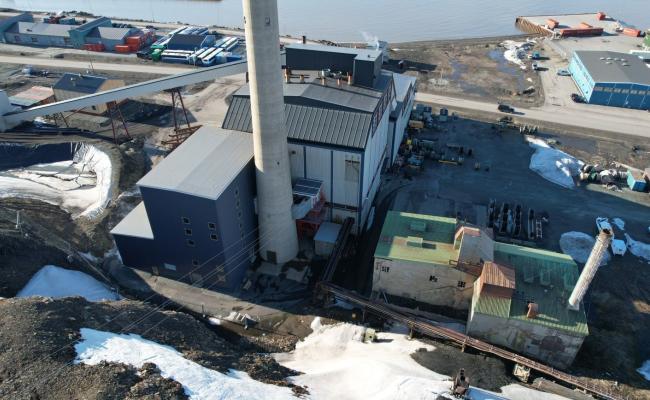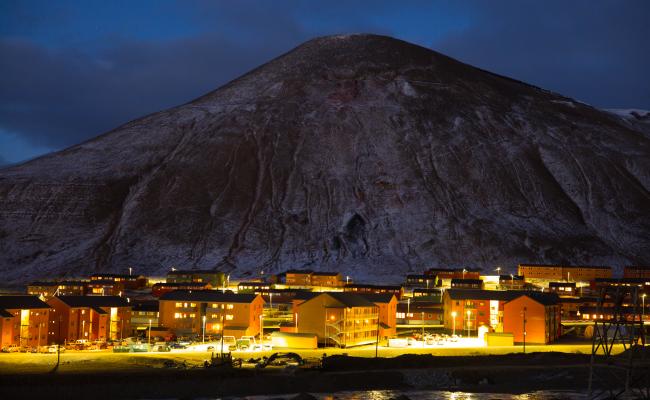Close Co-Operation about Svalbard
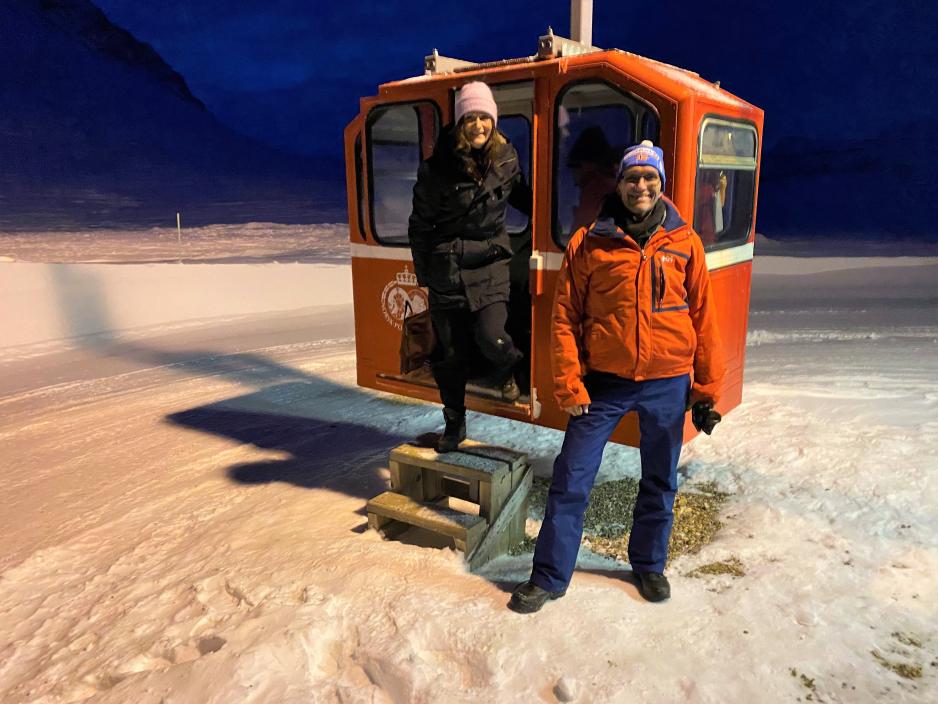
Climate and Environment Minister Espen Barth Eide and Political Advisor Maria Varteressian got to take the world’s northernmost cable car to the observatory on the Zeppelin Mountain in Ny-Ålesund. The cable car takes a maximum of four people and takes 13 minutes to the top. (Photo: Jo Randen/Ministry of Climate and Energy)
Last week, the government’s third minister came to visit Svalbard. The Ministers of Justice, Trade, and Climate and Environment cooperate closely about the future of the archipelago.
Longyearbyen is facing a major transition when it comes to a.o. business, energy and to securing the town against natural dangers in a new climate.
Earlier this month, Norwegian Justice Minister Emilie Enger Mehl (Center Party) and Trade Minister Jan Christian Vestre (Labor) visited Longyearbyen.
Last Wednesday, Climate and Environment Minister Espen Barth Eide (Labor) came. He visited Ny-Ålesund, the Svalbard Governor, the new environmental station currently being built in Longyearbyen, and he had conversations with the Local Council and local industry.
“We will have very close cooperation between the Svalbard ministries, and I am focused on that. We made a joint assessment soon after taking office about extending the hearing deadline for the environmental regulations. There should be good governance, which is the responsibility in particular of Mehl, there should be business development, for which Vestre is responsible, and we should take care of the environment, which is my responsibility. These issues have to be related, there has to be an overall thinking. If not, it will not go well with any of them”, says Barth Eide.
Global and regional
The Climate and Environment Minister says he plans on reporting to Mehl and Vestre about what he has seen as soon as he is back in Oslo.
“Many of us contribute to good cooperation. I have been part of a government before and know that there are often challenges between the various ministries. Each sits in its quarters and minds its own business. Now, I lead my third ministry and I want to contribute to cross-ministerial thinking”, he says.
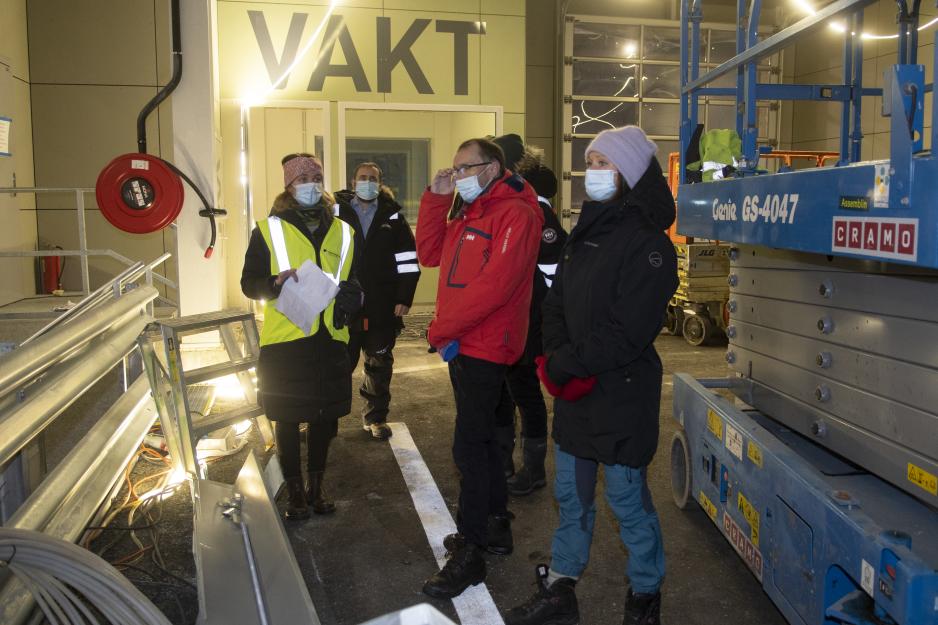
Climate and Environment Minister Espen Barth Eide (Labor) got a tour of the new environmental station in Longyearbyen. Technical Manager Kjersti Olsen Ingerø tells him about the work there. (Photo: Line Nagell Ylvisåker)
How will you bring with you the experience you hold as former Minister of Foreign Affairs and of Defense?
“Svalbard was high on my radar in those capacities too”, Barth Eide replies.
He was part of creating the High North Strategy under the first Stoltenberg government and also heavily involved in the Demarcation Agreement [of 2010, with Russia].
“All this is important to keep in mind. Svalbard’s more international challenges, and the need for governance, should always be seen in a global context as well as a regional context. Our best ticket to stability and acceptance is that we are a good governor. On the day we cease to be that we may be challenged in all sorts of ways. But being a good governor grants us a high level of acceptance”, he says.
New environmental legislation
One of the big issues in Svalbard recently has been the changes to the Svalbard Environmental Act, for which the Climate and Environment Department is in charge. That was also on the agenda when meeting with Longyearbyen Local Council and local businesses last Friday.
At the end of the day, Norwegian authorities decide.
In the proposal, large areas will as a general rule be closed for visitors.
“It goes for the whole civilized world; the more we learn about how people affect nature, the more restrictive we have to be. We gain more understanding and knowledge about what to do differently. In that sense, it is a healthy and necessary debate at all times about industry and environment”, Barth Eide says.
He argues that in order to reduce conflicts, one has to look at how to increase shared interests. The minister brings an example:
In Longyearbyen, many in the tourist industry do not have a goal about as many tourists as possible, but rather want tourists that leave money and spend time, like expedition tourists. They are more attractive to the local businesses than cruise tourists, who disembark from large vessels, buy souvenirs, and leave again.
“That also fits well with my goal about protecting the environment. You get a bigger economic effect along with less pressure. In this area, one can get together and consider options and weigh them against each other. One can reach several societal goals at the same time”, he says.
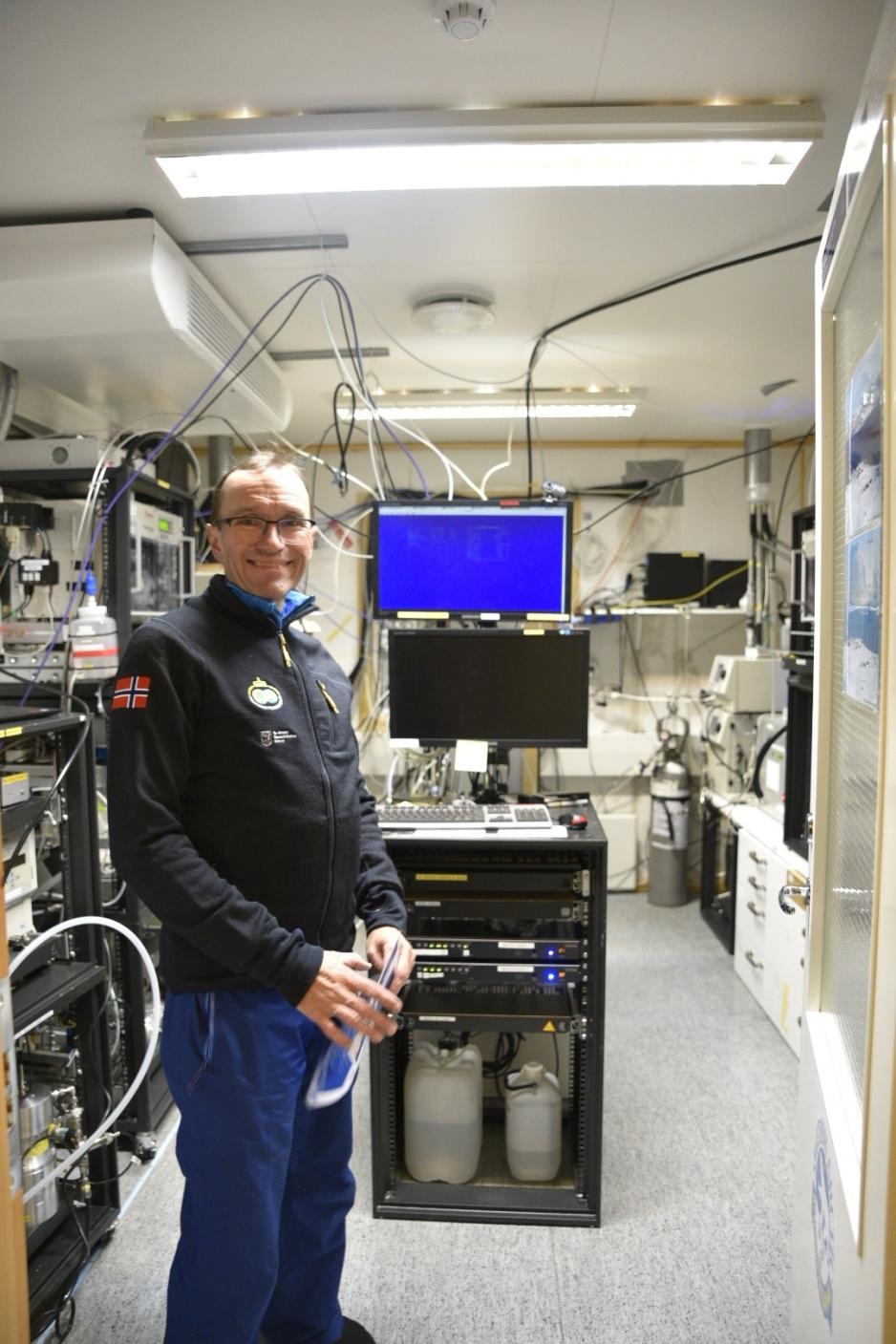
Climate and Environment Minister Espen Barth Eide (Labor) on a tour at the Zeppelin Observatory in Ny-Åleseund. (Photo: Maria Varteressian, Ministry of Climate and Environment)
Why has not limiting the number of visitors rather than closing entire areas for visitors been considered?
“It has to do with the commitments of the Svalbard Treaty and the principle of free access. We are focused on all governance happening in accordance with these. However, we have a rather good potential for exerting authority as long as there is equal treatment. The regulations applying to the Russian company Trust Arktikugol must be exactly the same as applies to all other actors. At the end of the day, Norwegian authorities decide”, Barth Eide responds.
The new draft regulation proposal includes a.o. the maximum number of passengers that may be onboard an expedition vessel, and where people are allowed to enter. This is something that was discussed at the meetings.
Is it right to only open up for visits to only just over 40 places, or should tourists be allowed to enter most places? According to Eide, the Directorate of Environment will argue that concentrating human traffic will be important.
Because if all human influence leaves footprints, one can decide where these should be. The tourist industry argues that one should be allowed to enter more places, and that that would lead to less footprints in each place, relatively speaking.
“Then you are in an actual discussion about actual conditions”, Barth Eide says.
How close one may be to polar bears an walruses without disturbing them is also an empirical question that needs clarification.
“And then we will have to find the best solution”, the minister says.
Window to the world
On Thursday, the minister visited the research community of Ny-Ålesund, north of Longyearbyen. He came there for the first time 15 years ago, and his last visit there was eight years ago. Then, he went to the Zeppelin Observatory in Ny-Ålesund together with the IPCC leader.
On the Zeppelin Mountain stands a small machine measuring how much CO2 there is in the atmosphere. It sholed 385 ppm (parts per million, ed.note) and the two leaders were most concerned about the numbers. When Eide visited the mountain this week, it showed 424 ppm.
“I knew it from before, really, but once you are there and see it at the measuring station yourself, you get a real-time experience of how bad the situation is. We know that if we are to stay within the 1.5 degrees goal, we have very little left on our climate budget. The little machine up there shows how we keep filling the atmosphere”, the Climate Minister says. He finds the research conducted in Ny-Ålesund and Longyearbyen to be extremely useful, important, and alarming. The measures from the Zeppelin Mountain contributes to a global understanding of the climate problem.
And when you go down from the Zeppelin Mountain, you see houses falling apart because of the very same climate changes.
In addition, temperatures in Svalbard increase fast, both in the air and in the sea, and one sees the very concrete effects of this. New species appear and in addition, the climate changes also hit Ny-Ålesund.
Much of the buildings in this community were constructed atop of permafrost back in the day. Back then, one did not think about the consequences this might have. They are cast on pillars straight onto the ground or have short pillars dug into the permafrost. When the active permafrost layer that thaws every summer gets deeper, the houses get damaged.
“In Ny-Ålesund, you can both have a window to the world while also, when you descend from the Zeppelin Mountain, you see the houses falling apart due to the very same climate changes”, Barth Eide says. The development in Longyearbyen is not far behind. Therefore, the minister argues that it is very important to support and provide a good foundation for strengthening the kind of research that gives us insight, and to grow better at applying it locally in Svalbard as well as elsewhere in the North.
Svalbard in ten years
How does the Climate and Environment Minister envision Svalbard in ten years?
He believes we will see a town that has come far in its energy transition. That Longyearbyen will have numerous international visitors who want to see how a former coal-fueled community is now about to get fully sustainable.
It may not be fully sustainable in ten years; however, Barth Eide believes we have come a long way by then. The local community has phased out coal and transitioned to battery and diesel.
Diesel is better than coal, even though it is not sustainable, and te plant is designed so that more renewable sources can be phased in over time. One also looks at interesting options such as geothermal heating, solar power, and about whether hydrogen can be imported from Varanger and Berlevåg.
Barth Eide believes the research community on climate changes will take an even stronger lead. In addition, what goes on here will be internationally interesting because Longyearbyen was early in re-constructing buildings and infrastructure to post-permafrost conditions.
When other northern countries start facing the same issue, Svalbard will have developed unique competence in this area.
In addition, the Minister believes it will be a place of quality tourism. Not large amounts of people, but sustainable tourism with tourists who have solid purchase power.
Perhaps they come here for nature, or perhaps because of their climate consciousness, as Svalbard by then will have become a “green” destination.
Then, one should preferably land with planes operating on green fuel and tourists should be able to go out on a hydrogen-fueled boat to get the best total experience.
“When Greta Thunberg’s generation becomes middle class Europeans with purchase power, they will be able to ask questions about how they themselves affect the place if they come here. We see that already, and we must have good answers for them”, Barth Eide says.
Also read
This article was originally published in Norwegian and has been translated by HNN's Elisabeth Bergquist.


